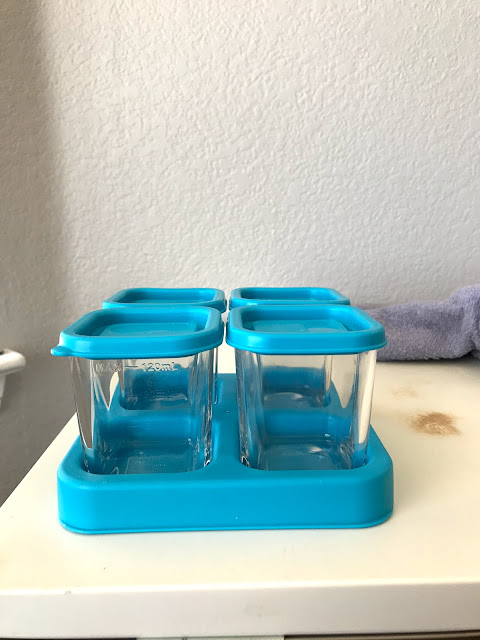My baby gear must-buys: Thoughts at one year into motherhood
These are the must-buys, based on my experience. Note that each mother-child dyad has its own unique journey. This one's ours so the things I found necessary may be regarded as not must-buys by others. And that's perfectly okay.
Baby Brezza steriliser
Baby Brezza formula mixer
Simba Twist-Lock stackable milk powder formula dispenser
My parents kept telling me that they used to pre-measure my milk powder and the water whenever they had to bring me with them in the car. Water was already in a bottle and the powder was in a dispenser. So I thought: why don't I buy something similar for my son as well?
After searching for a few days, I ended up with the Simba formula dispenser. I like it a lot because the pre-measured milk powder shoots into the bottle (no leftovers!) and it can handle up to three milk preparations. This dispenser stacks up and allows me to save space in my son's cooler (yes, I lug along a cooler along with his diaper bag). Plus, now that he's off the milk bottle, I use the dispenser as fruit containers for when we're travelling.
Green Sprouts fresh baby food glass cubes
When the wee one turned six months old, his pediatrician guided me towards starting solid food. I didn't do the baby-led weaning route; rather, I decided to introduce him to purees first and move towards bigger, chunkier pieces as we went along. Some of the most useful containers for me at that time (and up until now that I'm preparing chickpea-sized food for him) are the glass cubes by Green Sprouts. These 4-oz glass containers were my go-to containers for medium-term storage of my son's food in the freezer. Yes, they took up quite a bit of freezer space back in the beginning as I was preparing food in batches. Now, however, because I tend to prepare food for a shorter time span (a week's worth, say), I don't use the freezer for cooked food anymore.
I still use these food cubes for taking packed lunches with us, particularly for new food that my son hasn't taken a liking to yet, or for sauces that go with dishes that he likes. But most of the time, because he eats more food than he did before, I tend to use bigger containers already. These cubes are effectively sidelined in the meantime.
Colgate baby toothbrush
My dentist advised me that as soon as my son had teeth, I had to start brushing them. This gave me a headache because my son already had his first six teeth and I hadn't started doing anything other than letting him drink water. So I rushed to buy toothbrushes for my child, only to be taken aback by the sheer number of options available.
Colgate is a reliable brand; I use its products a lot. So I thought maybe Colgate baby toothbrushes are also good for my child. True enough, when my son saw the butterfly-shaped toothbrushes, he grabbed them and started chewing on them. That took care of my worries at the time, particularly since he was still exclusively drinking milk. But when he started eating solids, I wondered if these toothbrushes were still appropriate. So gradually, I shifted him towards soft-bristled toothbrushes until the butterflies were no longer in use. As with his other gadgets, there were no goodbye ceremonies because we were doing the transitions slowly. Now, he's fully using toddler toothbrushes, also by Colgate.
Munchkin Any Angle Click Lock weighted straw cup
Our wean off the milk bottle began with this straw cup! The Munchkin straw cup is great to use because the weighted end ensures that the bottom of the straw always stays below liquid (assuming that the baby doesn't drink all the contents of the cup) and the handles encourage the baby to hold on to the cup. Also, because it's easy to seal, we rarely had issues with leaks. It really made the process of shifting from bottle to cup easy.
I only have three issues with this cup. First, the flexible straw is so narrow that it is quite a pain to clean. And I clean this straw all the time because I don't want moulds to grow in it. Second, the valved end (found on top) of the straw tends to retain fluids. So when my son released the straw, the water just spewed all over his face. Third, the cup is supposed to be dishwasher-safe, but after a few washing cycles, it warped up. I had no recourse but to retire the straw cup, sadly.
Nevertheless, we had a very good run. My son used this cup heavily when I began introducing water to him until he was nine months old. Thanks to this straw cup, we were able to skip over the sippy cup stage altogether.






Comments
Post a Comment
Thank you for dropping by!
Before moving on, please share your thoughts or comments about the post. :)
Thanks again!